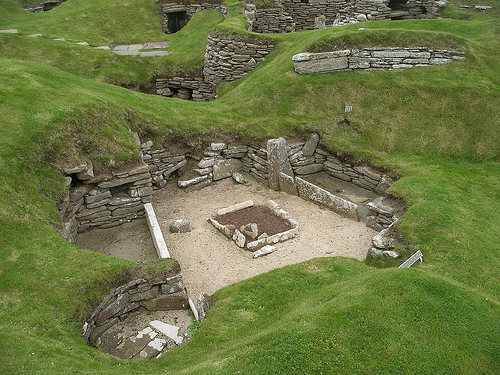Modern Cities Owe Their Cleanliness to These Innovative Old Sewers
Crucial advances in where we put our poop, throughout history.
BY KAVYA RAM MOHAN APRIL 13, 2017
The Crossness Pumping Station in London was so intricately decorated that it was nicknamed “The Cathedral on the Marsh.” AMANDA SLATER/CC BY-SA 2.0
EFFICIENT SEWER SYSTEMS HAVE LONG been a touchstone of modernity, differentiating a primitive settlement from a planned and sophisticated town or city. When studying the remains of ancient civilizations that flourished centuries ago, we are regularly amazed by their innovative systems for disposing of human waste.
The earliest and easiest form of disposal was to channel waste into the nearest body of water. This process was improved by the first clay drainage pipe, used in Babylonia as early as 4000 BC. The Mesopotamians also had cesspools of various sizes, a few of which were connected to a central system. There is even evidence of complex toilets and drains in ancient archaeological sites all around the world, including in Scotland, Pakistan, Rome, and Egypt.
After this promising start, sewer design evolved across centuries to meet the needs of growing populations, and to battle health hazards that came about due to poor disposal practices. London, for instance, faced a huge, smelly problem in 1858 dubbed the “Great Stink,” which was the result of mounting levels of untreated waste in the Thames and on the river banks. The Stink was eventually solved by a civil engineer who suggested a pattern of interconnected tunnels with outfalls outside the city limits, a system the city still uses.
Taking the long view of the history of human civilization, consider the importance of six places below, where remarkable innovations led to the modern-day sewers and sanitation systems we enjoy today.
The Neolithic village of Skara Brae designed individual lavatories for each of its huts.
The Neolithic village of Skara Brae designed individual lavatories for each of its huts. SHADOWGATE/CC BY 2.0
Neolithic Toilets of Skara Brae
Sandwick, Scotland
This small Neolithic settlement on the coast of Scotland is known for being one of the best-preserved in Europe. It was also likely an extremely clean village. Some of the earliest-known toilets and sewer systems have been found at this site, which was inhabited between 3100 and 2500 BC. Residents would have had lavatory-like plumbing systems fitted into the walls of their huts.
Deep tunnels, lined with tree bark to make them watertight, carried water from the roof and waste liquids from the connected huts to the ocean nearby. Given the depth of the tunnels, it’s believed that they were constructed before the structures aboveground, making this a very well-planned settlement. Considerable time and resources must have been used to build something as modern as an individual lavatory for each dwelling, an indication of the importance of personal hygiene within this ancient tribe.
The washrooms and latrines in Mohenjo-Daro were built on the street side of houses.
The washrooms and latrines in Mohenjo-Daro were built on the street side of houses. USMAN.PG/CC BY-SA 3.0
Ancient City of Mohenjo-Daro
Moenjo-daro, Pakistan
The people of the Indus Valley in southeast Asia were also sticklers for cleanliness, as evidenced in the ruins of cities such as Mohenjo-Daro. Built around 2500 BC, it was one of the biggest cities of a sprawling settlement that was concentrated in the northwest of India and parts of Pakistan. It is one of the world’s earliest urban settlements, and home to the iconic Great Bath, an ancient public pool.
Residents of Mohenjo-Daro who preferred a more private spot for their ablutions had the option of bathing in washrooms in their own houses, located next to latrines on the street side. Some houses even had a second-floor washroom, as indicated by the remains of terracotta pipes and vents.
Many dwellings were part of a centralized sewerage system, and in the ones isolated from this network, people made use of soak pits and jars to clean up after themselves. The water and waste gathered from both these individual homes and from public facilities ran through covered drains made of baked bricks, reaching the nearby river after passing through screens made of wood.
Centralized sewage systems were also found in Harappa and Lothal. The Indus Valley had the advantage of being located next to a number of rivers, making sewage disposal easier. The Romans, too, found this useful when they attempted to construct a drainage system._by_Usman_Ghani.jpg)

Nice
Congratulations @shahidramzan! You have completed some achievement on Steemit and have been rewarded with new badge(s) :
Click on any badge to view your own Board of Honor on SteemitBoard.
For more information about SteemitBoard, click here
If you no longer want to receive notifications, reply to this comment with the word
STOP